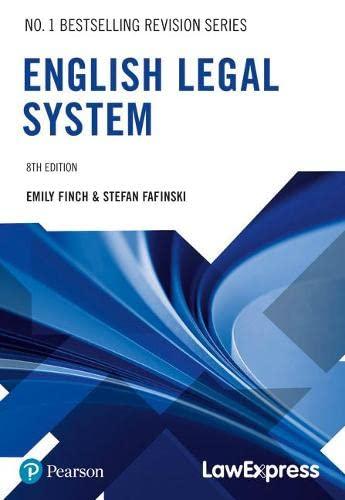Question
Discussion 2 (Chapter 3) Read Turner Billboards v. City of Webber Haben . Identify one Constitutional law issue raised by the case.Describe the law briefly.Explain
ReadTurner Billboards v. City of Webber Haben.
Identify one Constitutional law issue raised by the case.Describe the law briefly.Explain how the law applies to the facts inTurner.Explain how you would resolve the issue if you were the judge in the case.
To receive full credit for this discussion:
- State one Constitutional law issue you noted inTurner Billboards v. City of Webber Haben.
- Describe the law briefly.
- Explain how the law you identified applies to the facts inTurner.
- Describe how you would decide the case on the issue you raised, assuming you are the presiding judge in the case.Be sure to describe why you decided the way you did using law, not just your opinion.
Turner Billboards v. City of Weber Haben
Read the following hypothetical case.Then proceed to the Chapter3 discussion and respond.You may want to print this case out for reference.
Turner Billboards
vs.
City of Weber Haben
Facts
John Turner owns Turner Billboards. Turner Billboards has 53 outdoor advertising billboards located in 6 counties in Central Florida, mostly Polk County. Three hurricanes have recently caused severe damage to 38 of his billboards. 27 of the damaged billboards were totally blown away, and 11 of the billboards were damaged by more than 51 percent.
Five of Turner's damaged billboards are located within the City of Weber Haben. In 2003 the City passed an outdoor advertising ordinance. The ordinance requires that no new billboards can be constructed, all existing billboards must be removed by 2023, and any billboard damaged by more than 51 percent between 2003 and 2023 cannot be rebuilt and must be removed within 3 months of the damage. The purpose of the ordinance is "beautification of the City's roadways."
The Case
Turner Billboards (Turner) is suing the City of Weber Haben (City) to be allowed to reconstruct his billboards. His suit is based on the 5th Amendment to the U.S. Constitution and due process. He argues that by not being allowed to reconstruct his billboards, the government is depriving him of property without just compensation. He also argues that "beautification" is not a legitimate government purpose for taking his property and his economic freedom. City argues that according to prior Supreme Court rulings, reasonable restrictions may be placed on an individual's right to economic freedom. The ordinance does not directly take his property. They further argue that beautification of the roadways is a legitimate public purpose, justifying the ordinance and what Turner claims to be a taking of property.
The Law
Amendment 5, U.S. Constitution: ".. . nor shall private property be taken for public purpose without just compensation."
Weber Haben City Ordinance 2003-23-6: ". . . for the purpose of roadway beautification. . . no new billboards shall be constructed during the stated period . . . existing billboards shall be removed by said termination date . . . billboards damaged by more than 51 percent shall be removed not later than three months following the date of the damaging event."
Due process: 5th and 14th Amendments, no person shall be deprived of "life, liberty, or property without due process of law."
Research References(find these topics inyour text)
5th Amendment,Commercial Speech,Due Process
Step by Step Solution
There are 3 Steps involved in it
Step: 1

Get Instant Access to Expert-Tailored Solutions
See step-by-step solutions with expert insights and AI powered tools for academic success
Step: 2

Step: 3

Ace Your Homework with AI
Get the answers you need in no time with our AI-driven, step-by-step assistance
Get Started


